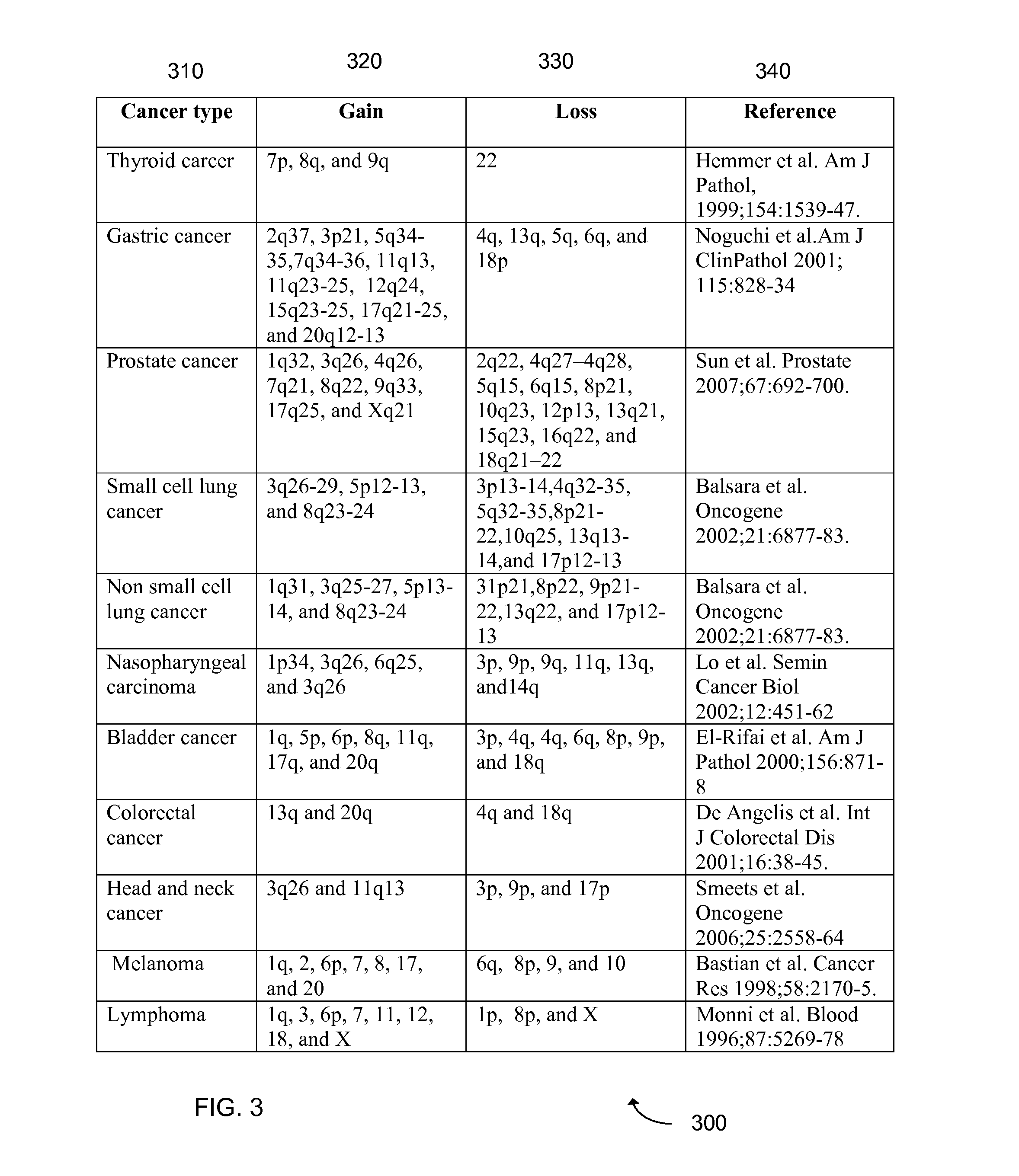Detection of genetic or molecular aberrations associated with cancer
a technology of molecular aberration and cancer, applied in the field of detection of genetic or molecular aberration associated with cancer, can solve the problems of inability to effectively detect cancer, lack of effective screening techniques, and limited application range, and achieve the effect of greater efficiency and/or accuracy
- Summary
- Abstract
- Description
- Claims
- Application Information
AI Technical Summary
Benefits of technology
Problems solved by technology
Method used
Image
Examples
Embodiment Construction
[0057]Cancerous tissue (tumor) can have aberrations, such as deletion or amplification of a chromosomal region. The tumor can release DNA fragments into fluids in the body. Embodiments can identify a tumor by analyzing the DNA fragments to identify the aberrations relative to normal (expected) values for DNA in the chromosomal region.
[0058]The exact size of the deletion or amplification can vary, as well as the location. There may be times when a particular region is known to show aberration in general for cancers or for a particular type of cancer (thereby leading to a diagnosis of a particular cancer). When a particular region is not known, a systematic method for analyzing the entire genome or large parts of the genome may be employed to detect aberrant regions that may be dispersed throughout the genome and whose size (e.g. number of bases deleted or amplified) varies. The chromosomal region(s) can be tracked over time to identify changes in a severity of an aberration or a numb...
PUM
| Property | Measurement | Unit |
|---|---|---|
| threshold | aaaaa | aaaaa |
| threshold value | aaaaa | aaaaa |
| threshold | aaaaa | aaaaa |
Abstract
Description
Claims
Application Information
 Login to View More
Login to View More - R&D
- Intellectual Property
- Life Sciences
- Materials
- Tech Scout
- Unparalleled Data Quality
- Higher Quality Content
- 60% Fewer Hallucinations
Browse by: Latest US Patents, China's latest patents, Technical Efficacy Thesaurus, Application Domain, Technology Topic, Popular Technical Reports.
© 2025 PatSnap. All rights reserved.Legal|Privacy policy|Modern Slavery Act Transparency Statement|Sitemap|About US| Contact US: help@patsnap.com



